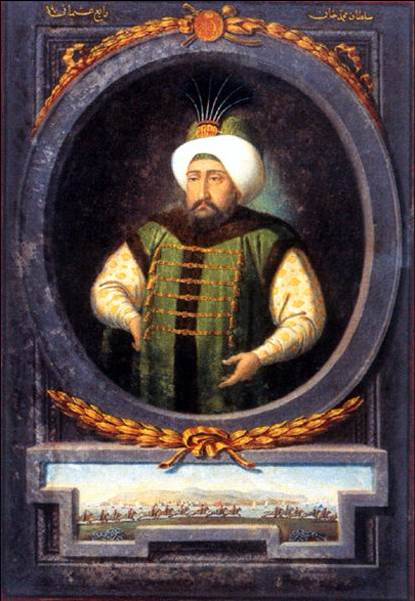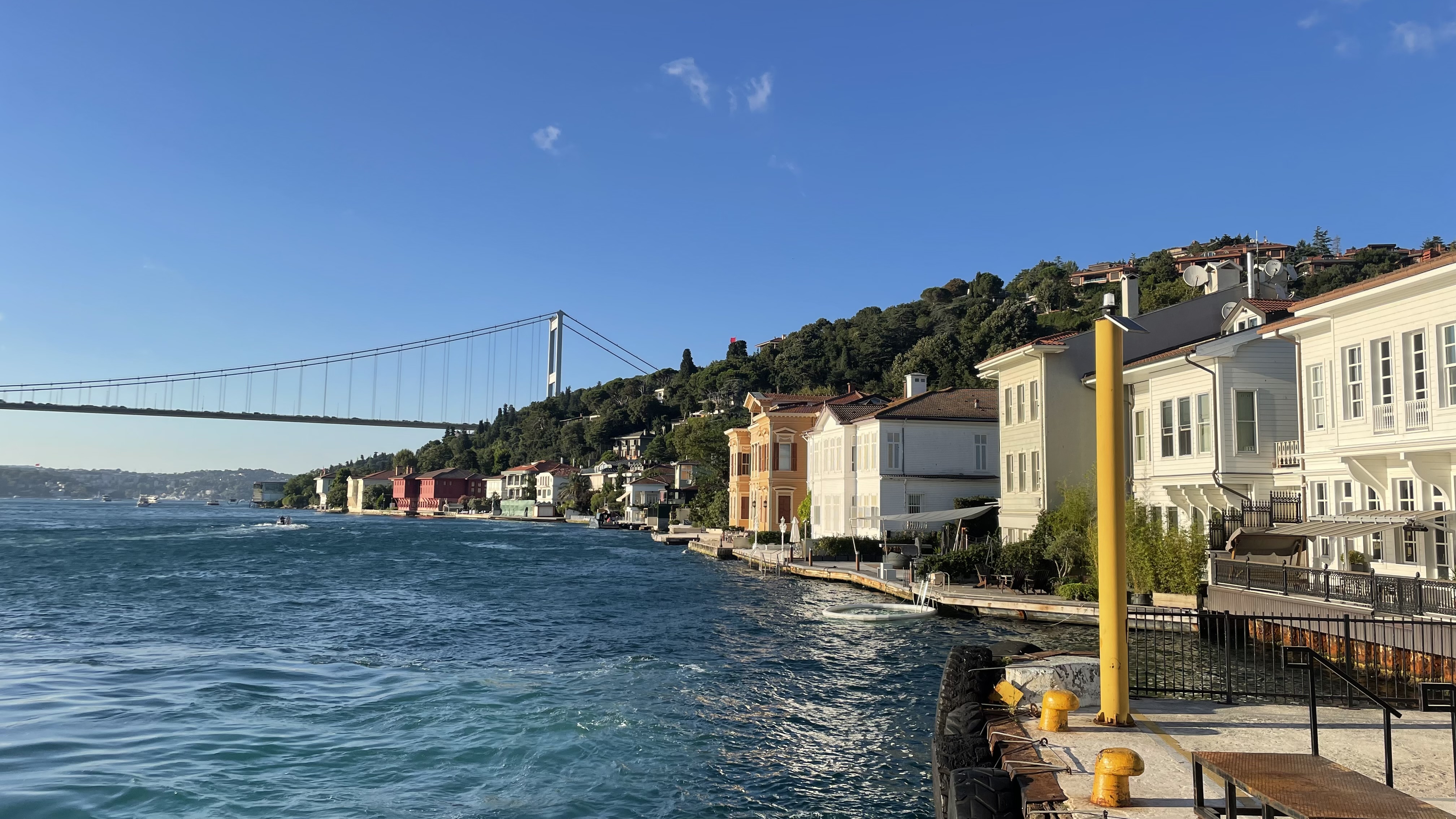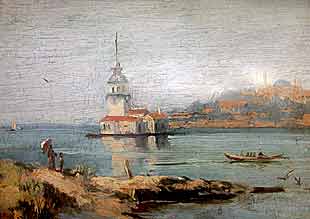|
Çamlıca, Üsküdar
Çamlıca is a leafy district of Üsküdar on the Asian side of Istanbul. It is famous for two hills—Big Çamlıca (''Büyük Çamlıca'' in Turkish, 268m) and Little Çamlıca (''Küçük Çamlıca'' in Turkish, 229m)—offering panoramic views across the Sea of Marmara and the Princes' Islands to the European side of Istanbul and Sarayburnu. Historically, these were renowned beauty spots although by the end of the 20th century modern development had detracted from that beauty, not least when a series of radio and television towers were built on the hills. Among the artists to leave drawings of the panoramic view from Büyük Çamlıca in its 19th-century heyday was the Üsküdar, Usküdar-born artist Hoca Ali Rıza. Çamlıca can be reached on the M5 Metro line from Üsküdar at Kısıklı (Istanbul Metro), Kısıklı and Bulgurlu, Üsküdar, Bulgurlu stations. Attractions Büyük Çamlıca Mosque In 2019 Turkey's largest mosque, the Great Çamlıca Mosque (''Büyük à ... [...More Info...] [...Related Items...] OR: [Wikipedia] [Google] [Baidu] |
Çamlıca Tower On Little Çamlıca Hill
Çamlıca is a Turkish place name and may refer to: Populated places *Çamlıca, Adıyaman, a village in the central district * Çamlıca, Alanya, a village in Alanya district of Antalya Province * Çamlıca, Antalya, a village in the central district of Antalya Province * Çamlıca, Aziziye *Çamlıca, Besni, a village in Adıyaman Province * Çamlıca, Ezine *Çamlıca, Gazipaşa, a village in Gazipaşa district of Antalya Province * Çamlıca, Göynük, a village in Bolu Province * Çamlıca, İnebolu, a village * Çamlıca, Istanbul, a neighborhood in the district of Üsküdar encompassing Çamlıca Hill * Çamlıca, Kaynaşlı * Çamlıca, Keşan, a municipality in Edirne Province * Çamlıca, Kozluk, a village in Batman Province *Çamlıca, Laçin * Çamlıca, Merzifon, a village in Amasya Province *Çamlıca, Mustafakemalpaşa * Çamlıca, Mut, a village in Mut district of Mersin Province *Çamlıca, Pasinler * Çamlıca, Silifke, a village in Silifke district of Mersin Prov ... [...More Info...] [...Related Items...] OR: [Wikipedia] [Google] [Baidu] |
Mimar Kemaleddin
Ahmed Kemaleddin (; 187013 July 1927), widely known as Mimar Kemaleddin (''Architect Kemaleddin'') was a Turkish architect, and one of the leading figures of the first national architectural movement, First National architectural movement, alongside Vedat Tek. Early years Ahmed Kemaleddin was born in 1870 to a middle-class Ottoman family in the Acıbadem, Kadıköy, Acıbadem neighborhood of Istanbul. His father was Miralay Ali Bey, a naval captain (naval), captain, and his mother was Sadberk Hanım. In 1875, he began with his primary education at the İbrahim Ağa Primary School. He continued his secondary education in 1881 in Crete, then part of the Ottoman Empire, due to his father's assignment. Returning soon after to Istanbul, he graduated from high school. In 1887, at the age of 17, he enrolled in the School of Civil Engineering (, now Istanbul Technical University). Kemaleddin graduated as an engineer with honours in 1891. He then remained at his alma mater and worked a ... [...More Info...] [...Related Items...] OR: [Wikipedia] [Google] [Baidu] |
Aziz Mahmud Hudayi
Aziz Mahmud Hudayi (1541–1628), (b. Şereflikoçhisar, d. Üsküdar), is amongst the most famous Sufi Muslim saints of the Ottoman Empire. A mystic, poet, composer, author, statesman and Hanafi Maturidi Islamic scholar, he was the third and last husband of Ayşe Hümaşah Sultan, granddaughter of Sultan Suleiman the Magnificent. Life Born of Hashemite ancestry in Şereflikoçhisar in Central Anatolia, Aziz Mahmud Hudayi completed his studies in a medrese in Istanbul. He became the Sheikh of Sultan Ahmed I who constructed the famous Blue Mosque and so read the first Friday prayer there on its opening. He was also especially respected by Sultan Murad III. He is a descendant of Junayd of Baghdad, and, as a descendant of Husayn ibn 'Ali, can be called a sayyid. He founded the Jelveti (Turkish: ''Celveti'') order of sufis and served as a qadi (Islamic judge, ''kadi'' in Turkish) in Edirne, Egypt, Sham (Syria), and Bursa. A murid (disciple) and khalifah (successor) of Üftade ... [...More Info...] [...Related Items...] OR: [Wikipedia] [Google] [Baidu] |
Lütfi Kırdar
Mehmet Lütfi Kırdar (March 15, 1887 – February 17, 1961) was a Turkish physician, civil servant, politician and Minister of Health and Social Security. He is best remembered for his long-term position as the Governor and Mayor of Istanbul. Early years and professional career Lütfi Kırdar was born 1887 in his native city of Kirkuk (then the Ottoman Empire) to the prominent Turkmen Kirdar family. After finishing primary and secondary education in his hometown, he graduated from high school in Baghdad, Ottoman Empire. In 1908, he went to Istanbul to study medicine at Istanbul University. He interrupted his university education and entered the army when the Balkan Wars (1912–1913) outbroke. After the war, he resumed his university education and graduated in 1917 as a physician. He began his profession in Najaf (today in Iraq). During World War I (1914-1918), he joined the army again. After the World War I, he returned to medicine serving in the Turkish Red Crescent. Havin ... [...More Info...] [...Related Items...] OR: [Wikipedia] [Google] [Baidu] |
Mehmed IV
Mehmed IV (; ; 2 January 1642 – 6 January 1693), nicknamed as Mehmed the Hunter (), was the sultan of the Ottoman Empire from 1648 to 1687. He came to the throne at the age of six after his father was overthrown in a coup. Mehmed went on to become the second-longest-reigning sultan in Ottoman history after Suleiman the Magnificent. While the initial and final years of his reign were characterized by military defeat and political instability, during his middle years he oversaw the revival of the empire's fortunes associated with the Köprülü era. Mehmed IV was known by contemporaries as a particularly pious ruler, and was referred to as gazi, or "holy warrior" for his role in the many conquests carried out during his long reign. Under Mehmed IV's reign, the empire reached the height of its territorial expansion in Europe. From a young age he developed a keen interest in hunting, for which he is known as ''avcı'' (translated as "the Hunter"). In 1687, Mehmed was overthrown by ... [...More Info...] [...Related Items...] OR: [Wikipedia] [Google] [Baidu] |
Çamlıca Tower
Küçük Çamlıca TV & Radio Tower (), or simply Çamlıca Tower, () is a telecommunications tower with observation decks and restaurants on Little Çamlıca Hill in Üsküdar district of Istanbul, Turkey. The total height of the tower is , of which is a 49-storey reinforced concrete structure with below ground. The height of the tower's steel antenna is . With a total height of above sea level, it carries the title of the highest structure in Istanbul. The structure was chosen by then prime minister Recep Tayyip Erdoğan after the Çamlıca Hill TV & Radio Tower Idea Project, which was opened by Istanbul Metropolitan Municipality in 2011. Construction started in late 2016 and finished four years later in September 2020. However, the project was set to be completed by the end of 2019. It was inaugurated on May 29, 2021. After the tower was put into service, other antennas and antenna towers such as Çamlıca TRT Television Tower were either removed or demolished. Archit ... [...More Info...] [...Related Items...] OR: [Wikipedia] [Google] [Baidu] |
Bulgurlu, ĂśskĂĽdar
Bulgurlu is neighbourhood in the municipality and district of Üsküdar, Istanbul Province, Turkey. Its population is 30,569 (2022). It is on the Asian side of the Bosphorus. Bulgurlu is one of the most populated neighborhoods of Üsküdar, and it is bordered by Küçükçamlıca Street to the west, Üçpınarlar Street to the south and the O-4 Anatolian Highway, to the east by Namık Kemal Neighborhood and to the north by Bulgurlu street. ''Küçük Çamlıca Hill'', one of the most important recreation areas of Istanbul, is also in this neighborhood. The historical Bulgurlu Bath was established in the 17th century and still serves. History The name of Bulgurlu, which is also mentioned as Burkullu, Burgulu, Burkurlu and Burgurlu in the sources, the claim that its name came from Bulgarian immigrants who settled in the region after April uprising of 1876 was not widely accepted. The name of the district, which was engaged in farming in the 16th century, must have derived from ... [...More Info...] [...Related Items...] OR: [Wikipedia] [Google] [Baidu] |
ĂśskĂĽdar
Üsküdar () is a municipality and district of Istanbul Province, Turkey. Its area is 35 km2, and its population is 524,452 (2022). It is a large and densely populated district on the Anatolian (Asian) shore of the Bosphorus. It is bordered to the north by Beykoz, to the east by Ümraniye, to the southeast by Ataşehir and to the south by Kadıköy; with Karaköy, Kabataş, Beşiktaş, and the historic Sarayburnu quarter of Fatih facing it on the opposite shore to the west. Üsküdar has been a conservative cultural center of the Anatolian side of Istanbul since Ottoman times with its landmark as well as numerous tiny mosques and dergahs. Üsküdar is a major transport hub, with ferries to Eminönü, Karaköy, Kabataş, Beşiktaş and some of the Bosphorus suburbs. Üsküdar is a stop on the Marmaray rail service at the point where it starts its journey under the Bosphorus, re-emerging on the European side at Sirkeci. Via Marmaray, Üsküdar is linked to Gebz ... [...More Info...] [...Related Items...] OR: [Wikipedia] [Google] [Baidu] |
Kısıklı (Istanbul Metro)
Kısıklı is an underground station on the M5 line of the Istanbul Metro in east Üsküdar. It is located beneath Kısıklı Avenue in the Küçük Çamlıca neighborhood of Üsküdar, on the southern foot of the Büyük Çamlıca Hill. Connection to IETT The Istanbul Electricity, Tram and Tunnel Establishments () or İETT is the transportation authority in Istanbul connected to the Istanbul Metropolitan Municipality specializing in public transportation. History After nationalizing various c ... city buses is available from at street level. The station consists of an island platform with two tracks. Since the M5 is an ATO line, protective gates on each side of the platform open only when a train is in the station. Kısıklı station was opened on 15 December 2017, together with eight other stations between Üsküdar and Yamanevler. Station Layout References Istanbul metro stations Üsküdar Railway stations in Turkey opened in 2017 {{Istanbul-metro-stu ... [...More Info...] [...Related Items...] OR: [Wikipedia] [Google] [Baidu] |
Hoca Ali Rıza
Hoca Ali Rıza (1858 in ĂśskĂĽdar – 20 March 1930 in ĂśskĂĽdar) was a Turkish painter and art teacher, known primarily for his Impressionist landscapes and architectural paintings. Biography Hoca Ali Rıza's father was a cavalry major and an amateur calligrapher.Biography and appreciation @ Milliyet. After completing his basic education, he attended Kuleli Military High School, continuing to the Turkish Military Academy, where he studied art with Osman Nuri Pasha (painter), Osman Nuri Pasha and SĂĽleyman Seyyid. In 1881, he received an award from Sultan Abdul Hamid II, AbdĂĽlhamid II. Three years later, he graduated with the rank of Lieutenant and was appointed an assistant to Nuri Pasha. [...More Info...] [...Related Items...] OR: [Wikipedia] [Google] [Baidu] |



